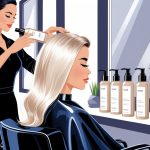Anti-Aging Moisturizers Now Outsmarting Pricey Prescription Creams
Improving Skin Tone, Texture, and Radiance
Honestly, I keep thinking my routine should’ve fixed everything by now. Instead, I wake up with a random patch of weirdness or, I don’t know, a new sallow spot. Creams promise the world, but I’m just chasing real ingredients and some actual results.
Fading Dark Spots and Discoloration
Trying to fade dark spots is like fighting a printer that’s out of ink—never clean, just a mess of faded splotches. Derms swear by vitamin C serum—specifically, stabilized L-ascorbic acid, over 10%, pH under 3.5 if you’re a nerd. Studies say you get 20% more brightness in eight weeks, but who’s counting?
Irritation is the enemy, so the better stuff mixes vitamin C with ferulic acid, vitamin E, or niacinamide. Oh, and SPF on top, always, because one sunny afternoon ruins months of work. Prescription hydroquinone isn’t always necessary now that OTC stuff is actually decent. There’s melasma, there’s post-acne marks, there’s freckle clusters after every picnic. Just unclench—a good brightening moisturizer actually does something if you stick with it.
Smoothing Texture and Enlarged Pores
What still drives me nuts? Running my hand over my face and hitting random bumps and craters. Glycolic acid (AHA MVP) helps if it’s at least 5-10% and pH under 4—don’t ask me why, that’s just what the experts say. Dr. Rabach insists regular exfoliation softens everything and gets new skin going, but nobody mentions that overdoing it with scrubs is just a ticket to red, angry skin.
Glycolic and lactic acids keep showing up in these creams—molecule size apparently matters (who knew?). HEPEs is in some fancy new formulas, breaking down dead skin gently, but “gentle” is code for “you’ll wait longer.” I patch-tested what felt like 30 bottles; only then did my texture actually improve. Still, nothing shrinks pores, but at least they look less obvious. “Glass skin” is maybe not a myth after all.
Brightening for a Youthful Glow
Here’s the thing—the “glow” in ads is a lie. Skip one night and you’re back to dull-ville. Some creams use kakadu plum or turmeric, which sounded like nonsense until I found out kakadu has ten times the vitamin C of oranges. Suddenly those brightening moisturizers seem less scammy.
Squalane and sodium hyaluronate matter too, locking in moisture so your face actually reflects light instead of looking like old wallpaper. Hydration isn’t about oiliness—oily skin can be dull too, especially if you’re scrubbing it raw. If you want that “lit from within” look (ugh), it’s about relentless layering and SPF, not magic. Every time I double up on products, I get irritation. Maybe one day I’ll wake up glowing, but at least the science feels less like marketing now.
Hydration Heroes: Moisturizing Ingredients That Matter

Everyone online swears their “hydrating” serum is the best, but nobody agrees if glycerin beats a $90 hyaluronic acid ampoule. Long-term hydration? Feels like putting together Ikea furniture with missing instructions—except, honestly, maybe getting smoother skin is easier than a Billy bookcase. I keep seeing people argue about ceramides, squalane, and barrier oils, but at least these ingredients actually seem to do something. Here’s what’s actually working for me lately—no fluff, just the good stuff.
Humectants Like Glycerin and Hyaluronic Acid
Why is everyone obsessed with hyaluronic acid? Every influencer acts like it’s the only thing keeping their face from shriveling up, but then you find out plain old glycerin—yeah, the cheap, boring one—actually does most of the work. I mean, hyaluronic acid’s supposed to hold a thousand times its weight in water, and sure, it’s already in your skin, but so what? Glycerin just sits there in drugstore lotions, quietly doing its job, no drama, no hype. Sometimes I swear the only difference is how much the marketing department spent.
A dermatologist once grumbled to me at some conference that both of them just grab water and shove it into your skin—hyaluronic acid just has a better PR team. Glycerin’s tiny, so it sinks in and hangs out, pulling moisture from wherever it can—inside your skin, the air, whatever. That’s why it’s in every cheap lotion. Hyaluronic acid? Well, unless the formula gets the molecular size right (which, let’s be honest, most don’t), you’re not getting that “dewy” thing for more than a minute. I read this Fresh skincare breakdown and honestly, it just made me more suspicious. Layering both? Go ahead, but don’t expect miracles.
And nobody ever warns you: if you slap hyaluronic acid on dry skin, it might just steal water from your own face. Why did nobody mention this before I blew $30 on a “hydrating” serum? Always follow with something that locks it in. Simple, but apparently it’s a secret.
Emollients for Lasting Softness
Let’s get this out of the way: if you’re scared of anything that isn’t “oil-free,” you’re missing out. When my skin goes full lizard mode, the only thing that saves it is a thick layer of shea butter or squalane before my moisturizer. My cat hates it, but whatever. Shea butter just sticks around, and weirdly, doesn’t break me out (unless you’re super sensitive, but that’s a whole other rant).
Nobody seems to talk about how emollients literally fill in the little cracks in your skin. That’s why your face feels smooth—fats and waxes like beeswax, jojoba, squalane, they just patch things up and stop water from running off your face. I’ve tried only serums, and by dinner, my cheeks look like I’ve been living in the desert. But if I throw on something thick—like LANEIGE Water Bank Cream or just plain squalane oil—I can walk through a snowstorm and not care.
And can we stop calling everything “emollient” greasy? Most of the new stuff absorbs fast and doesn’t mess up my phone screen. Coconut oil is a whole different beast, and I’m not even starting that fight today.
Barrier-Boosting Ceramides and Oils
Here’s what blows my mind: people with dry, angry skin always skip ceramides because “lipid” sounds scary. Then I finally read an ingredient list and saw ceramides are what skin makes anyway. Now I check for ceramide, phytosphingosine, and cholesterol like a paranoid label detective.
New barrier creams? They’re often better than prescription stuff from five years ago, because they copy what your skin does naturally. Ceramides fix what hot showers and retinol destroy. I skimmed this clinical trial—multi-ceramide formulas actually helped in weeks, not months. Jojoba oil’s nearly identical to skin oil, so it’s weirdly gentle.
Nobody agrees on how much is enough. Too little, pointless. Too much, and you’re sliding off your pillow. My skin’s thrown a fit more than once after I tried a “moisturizer for aging skin” and ended up flaky and broken out. (The Vogue moisturizer roundup barely scratches the surface on this mess.) I only trust patch tests and obsessively reading labels.



